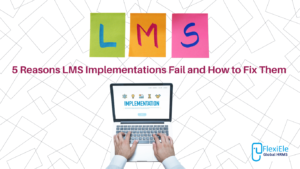
The promise of a Learning Management System (LMS) is compelling: streamlined training, improved employee performance, enhanced knowledge retention, and significant cost savings. However, the reality is that many organizations find themselves grappling with LMS implementation failure, a frustrating scenario where the expected benefits never materialize, and the system becomes a costly and underutilized piece of software.
This blog post will delve into seven crucial reasons why LMS implementations often fail, providing actionable insights and practical strategies to mitigate these risks and ensure a successful and impactful rollout.
Lack of Clear Goals and Objectives:
The Foundation of LMS Implementation Failure
Perhaps the most common cause of LMS implementation failure stems from a lack of clearly defined goals and objectives. Without a concrete understanding of why you’re implementing an LMS, you’re essentially sailing without a compass. You might have a shiny new system, but you’ll struggle to determine if it’s actually meeting your needs.
The Problem:
- Vague aspirations: Phrases like “improve employee training” or “modernize learning” are too broad and lack measurable outcomes.
- Misaligned expectations: Different departments or stakeholders might have conflicting ideas about what the LMS should achieve.
- No defined KPIs: Without Key Performance Indicators (KPIs), you have no way to track progress or measure the ROI of your LMS implementation.
The Solution:
- Conduct a thorough needs analysis: Engage with stakeholders from across the organization to understand their specific training needs, challenges, and desired outcomes.
- Establish clear KPIs: Identify key metrics to track, such as course completion rates, employee satisfaction scores, knowledge retention rates, and the impact of training on business performance.
- Document everything: Create a comprehensive project plan outlining the goals, objectives, scope, timeline, and budget for the LMS implementation.
Inadequate Stakeholder Involvement and Buy-in:
Resistance to Change and LMS Implementation Failure
The Problem:
Top-down approach: Imposing the LMS without considering the needs and perspectives of end-users.
Lack of communication: Failing to keep stakeholders informed about the implementation process and its benefits.
Ignoring feedback: Disregarding concerns and suggestions from users can create resentment and undermine adoption.
The Solution:
- Establish a cross-functional implementation team: Include representatives from HR, IT, training, and relevant departments.
- Communicate transparently and frequently: Keep stakeholders informed about the progress of the implementation, address their concerns, and solicit feedback.
- Offer training and support: Provide ample training opportunities to ensure users are comfortable with the new system.
Choosing the Wrong LMS:
A Mismatch of Features and Organizational Needs leading to LMS Implementation Failure
The Problem:
- Feature overload: Selecting an LMS with too many features that are not relevant to your organization’s needs.
- Poor usability: Choosing a platform that is difficult to navigate and use, leading to user frustration.
- Inadequate support: Selecting an LMS vendor that provides limited or unresponsive support.
The Solution:
- Conduct a thorough needs assessment: Identify the specific features and functionalities your organization requires.
- Develop a detailed Request for Proposal (RFP): Clearly outline your requirements and expectations for potential LMS vendors.
- Request demonstrations and trials: Evaluate the usability and functionality of different LMS platforms.
Poor Content Migration and Course Design:
A Content Void contributes to LMS Implementation Failure
The Problem:
- Outdated content: Migrating outdated or irrelevant content to the new LMS.
- Poorly designed courses: Creating courses that are unengaging, difficult to understand, or lacking in practical application.
- Lack of mobile optimization: Failing to optimize content for mobile devices, limiting accessibility for users on the go.
The Solution:
- Review and update existing content: Ensure all content is accurate, relevant, and up-to-date.
- Invest in professional course design: Work with instructional designers to create engaging and effective courses.
- Optimize content for mobile devices: Ensure all content is accessible and easily viewable on mobile devices.
- Insufficient Training and Support:
Leaving Users in the Dark fosters LMS Implementation Failure
The Problem:
- Lack of training: Failing to provide adequate training for users on how to navigate and use the LMS.
- Inadequate support: Providing limited or unresponsive support to users who are struggling with the LMS.
- One-size-fits-all approach: Offering generic training that does not address the specific needs of different user groups.
The Solution:
- Develop a comprehensive training plan: Create a training plan that covers all aspects of the LMS and addresses the specific needs of different user groups.
- Offer multiple training formats: Provide training in various formats, such as online courses, webinars, and in-person workshops.
- Provide ongoing support and resources: Offer ongoing support through help desks, FAQs, and user forums.
How FlexiEle HRMS Can Transform Your LMS Experience
Implementing a Learning Management System (LMS) can be a daunting task, and many organizations encounter various challenges along the way—like low engagement, technical hiccups, or difficulties in tracking progress. FlexiEle Global HRMS offers a comprehensive solution to these issues, ensuring a smooth transition and an enriching learning experience for all users.
- Seamless Course Management
Creating and managing courses should never be a hassle. With FlexiEle, administrators can effortlessly upload multiple files—whether they’re videos, documents, or quizzes—in one go. This ease of use means that your training content is ready for learners faster, without the frustration of technical barriers.
- Engaging Learning Through Gamification
One major reason LMS implementations fail is the lack of engagement. FlexiEle combats this by incorporating gamification techniques. Badges, certificates, and interactive dashboards keep learners motivated and informed about their progress. This not only makes learning fun but also helps maintain high levels of engagement throughout their journey.
- Mobile Learning Flexibility
In today’s fast-paced world, learners need access on-the-go. FlexiEle’s mobile app enables users to access courses and assessments anytime, anywhere. This flexibility ensures that your team can learn at their own pace, fitting their training into their busy schedules and improving overall completion rates.
- Blended Learning Approach
Recognizing that one size doesn’t fit all, FlexiEle supports blended learning, combining online and in-person training modes. This versatility accommodates different learning styles and preferences, thereby reducing dropout rates and enhancing overall effectiveness.
- Comprehensive Reporting and Analytics
A key to successful training initiatives is tracking progress. FlexiEle provides robust reporting and analytics features, allowing you to see the complete picture of learners’ achievements. Auto-generated certificates and badges are not just rewards; they serve as tangible proof of employees’ growth, motivating them to continue their education.
- Tailored Employee Training Hours
To focus on individual growth, FlexiEle monitors and provides insights into the total training hours completed per employee within a calendar year. This personalized approach not only empowers employees but also helps management in recognizing high achievers and identifying those who may need additional support.
Conclusion
By choosing FlexiEle HRMS, you’re not just implementing a system; you’re creating an enriching learning environment that addresses the common pitfalls of traditional LMS implementations.
With its intuitive features and supportive approach, FlexiEle ensures that your organization’s learning initiatives are a success. Let’s empower your employees to learn and grow, benefiting both their personal and professional development!

